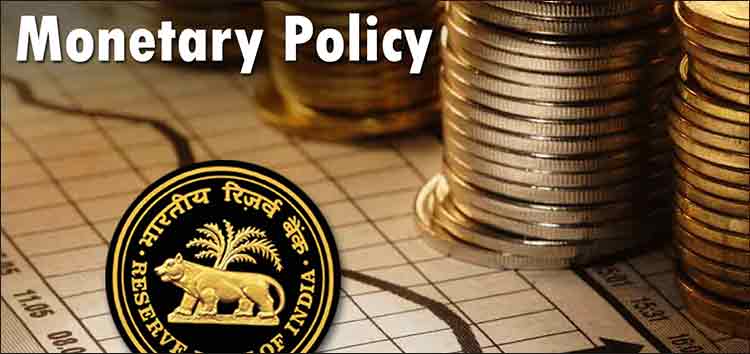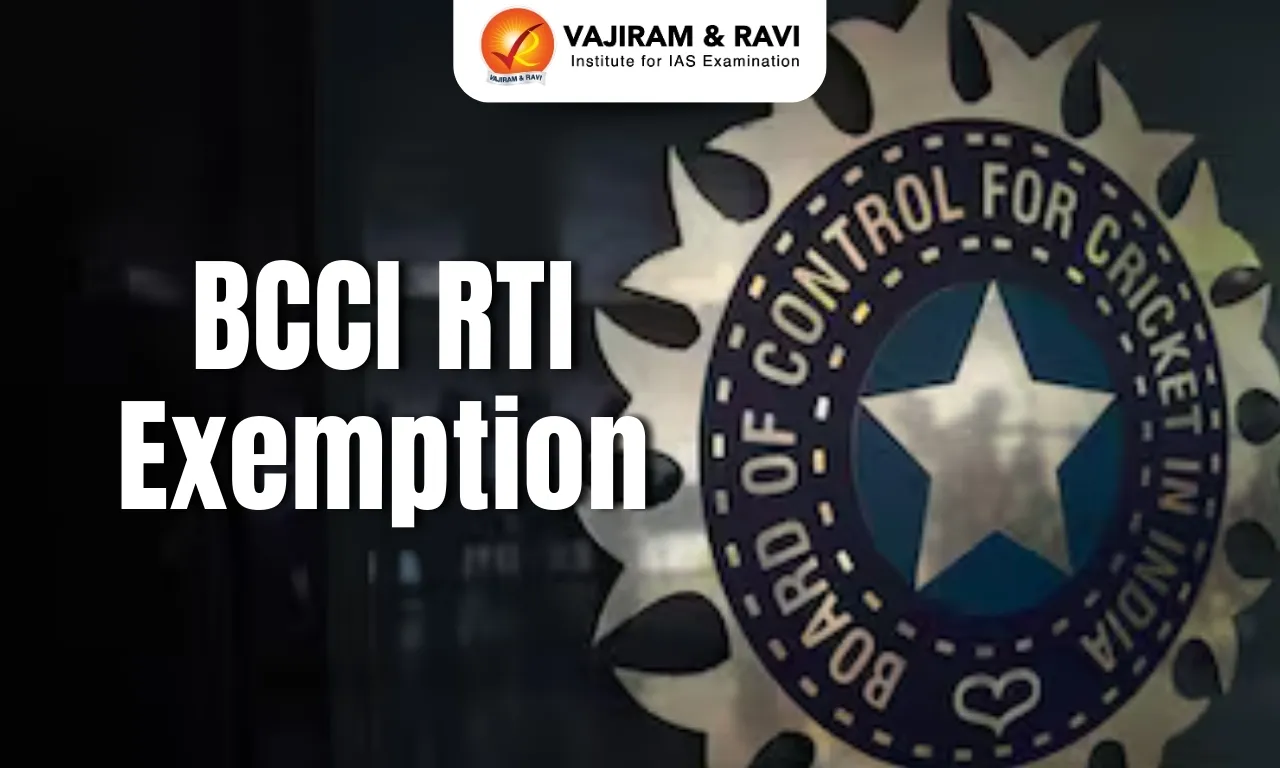What’s in today’s article?
- Why in News?
- What is Monetary Policy?
- What is the Monetary Policy Committee (MPC)?
- What are the Instruments of Monetary Policy?
- What are the Recent Decisions taken by the MPC/RBI?
Why in News?
- On expected lines, the Reserve Bank of India (RBI) left the repo rate unchanged at 6.5% for the third time in a row amid concerns over rise in inflation.
- The 6-member Monetary Policy Committee (MPC) revised its FY’24 consumer price index (CPI) inflation projection to 5.4% from an estimate of 5.1% (announced in June), while retaining its forecast for real GDP growth at 6.5%.
What is Monetary Policy?
- Meaning:
- It is the macroeconomic policy laid down by the central bank, involving management of money supply and interest rate.
- It is the demand side economic policy used to achieve macroeconomic objectives like inflation, consumption, growth and liquidity.
- Monetary policy in India:
- In India, the monetary policy of the RBI is aimed at managing the quantity of money in order to meet the requirements of different sectors of the economy and to increase the pace of economic growth.
- For example, liquidity is crucial to stimulate growth for an economy. The RBI depends on monetary policy to maintain liquidity.
- The RBI implements the monetary policy through open market operations (OMOs), bank rate policy, reserve system, credit control policy, moral persuasion, etc.
- For example, the RBI introduces the money in the economy and cuts the interest rate by buying bonds through OMOs.
- The use of any of these tools will result in adjustments in interest rate or the money supply in the economy.
- In India, the monetary policy of the RBI is aimed at managing the quantity of money in order to meet the requirements of different sectors of the economy and to increase the pace of economic growth.
- Classification of Monetary Policy:
- Monetary policy can be classified as expansionary (or accommodative) and contractionary (or tight) in nature.
- Accommodative monetary policy is triggered to encourage more spending from consumers and businesses by increasing money supply and reducing interest rates.
- When firms can easily borrow money, they have more funds to expand operations and hire more workers, resulting in a lower unemployment rate.
- On the other hand, if the money supply is loosened over an extended period of time, there will be too much money chasing too few goods and services, resulting in inflation.
- To avoid inflation, most central banks rotate between accommodating and tight monetary policy (decreasing the money supply and raising interest rates) to varied degrees in order to promote growth while keeping inflation under control.
What is the Monetary Policy Committee (MPC)?
- The Reserve Bank of India (RBI) Act, 1934 was amended by the Finance Act, 2016 to constitute MPC.
- MPC is responsible for fixing the benchmark interest rate in India, bringing more transparency and accountability in fixing India’s Monetary Policy.
- The committee comprises six members – three officials of the RBI and three external members nominated by the Government of India (GoI). The RBI Governor is the chairperson (ex officio) of the committee.
- The current mandate of the committee is to maintain 4% (+/- 2%) annual consumer price index-based inflation (CPI) rate and the committee is answerable to the GoI if the inflation exceeds the range prescribed for three consecutive quarters.
What are the Instruments of Monetary Policy?
- Liquidity Adjustment Facility (LAF): It allows banks to borrow money through repurchase agreements (repos) or to make loans to the RBI through reverse repo agreements.
- Repo Rate: The repo rate is the rate at which the RBI lends money to banks to meet their short-term funding needs.
- Reverse Repo Rate: The interest rate at which the Reserve Bank absorbs liquidity from banks against the collateral of eligible government securities under the LAF.
- Statutory Liquidity Ratio (SLR): It is the minimum percentage of deposits that a commercial bank has to maintain in the form of liquid cash, gold or other securities.
- Marginal Standing Facility (MSF) Rate: It is the penal rate at which banks can borrow, on an overnight basis, from the RBI by dipping into their SLR portfolio.
- Bank Rate: The Bank Rate acts as the penal rate charged on banks for shortfalls in meeting their reserve requirements (cash reserve ratio and statutory liquidity ratio).
- Cash Reserve Ratio (CRR): CRR is a percentage of total deposits that the banks have to maintain as liquid cash with the RBI.
- Open Market Operations (OMOs): These include outright purchase/sale of government securities by the RBI for injection/absorption of durable liquidity in the banking system.
What are the Recent Decisions taken by the MPC/RBI?
- The MPC decided to keep the policy repo rate unchanged at 6.5%. The existing CRR has been left unchanged at 4.5%.
- The RBI directed banks to maintain an incremental cash reserve ratio (I-CRR) of 10% for banks in order to manage surplus liquidity in the banking system.
- It will suck out above Rs 1 lakh crore of excess liquidity from the banking system.
- The RBI has focused on its stance of ‘withdrawal of accommodation’ until all risks to inflation dissipate.
- RBI has proposed to launch “conversational payments” on UPI so that users can engage in conversation with an AI-powered system to initiate and complete transactions.
- The facility will initially be available in Hindi and English.
- RBI plans to facilitate offline transactions using Near Field Communication technology. This will enable payments in situations with weak connectivity.
- RBI has increased per transaction limit to 500 from 200 for small value digital payments in offline mode including for National Common Mobility Card and UPI Lite.
Q1) What is the Consumer price index (CPI) and how does it differ from Wholesale price India (WPI)?
Both WPI and CPI are used to calculate the inflation rate. WPI is used to measure the average change in price in the sale of goods in bulk quantity by the wholesaler, and CPI is used to measure the change in the price in the sale of goods or services in retail or directly to a consumer.
Q2) What is the difference between fiscal and monetary policy?
Monetary policy refers to central bank activities that are directed toward influencing the quantity of money and credit in an economy. By contrast, fiscal policy refers to the government’s decisions about taxation and spending. Both policies are used to regulate economic activity over time.
Source: Eye on inflation, RBI keeps repo rate unchanged | IE
Last updated on August, 2025
→ UPSC Mains Admit Card 2025 will be released soon at www.upsc.gov.in.
→ UPSC Mains 2025 will be conducted on 22nd August 2025.
→ UPSC Notification 2025 was released on 22nd January 2025.
→ UPSC Calendar 2026 is released on 15th May, 2025.
→ UPSC Prelims Question Paper 2025 and Unofficial Prelims Answer Key 2025 are available now.
→ UPSC Prelims Result 2025 is out now for the CSE held on 25 May 2025.
→ The UPSC Vacancy 2025 were released 1129, out of which 979 were for UPSC CSE and remaining 150 are for UPSC IFoS.
→ UPSC Prelims 2026 will be conducted on 24th May, 2026 & UPSC Mains 2026 will be conducted on 21st August 2026.
→ The UPSC Selection Process is of 3 stages-Prelims, Mains and Interview.
→ UPSC Result 2024 is released with latest UPSC Marksheet 2024. Check Now!
→ UPSC Toppers List 2024 is released now. Shakti Dubey is UPSC AIR 1 2024 Topper.
→ Also check Best IAS Coaching in Delhi















